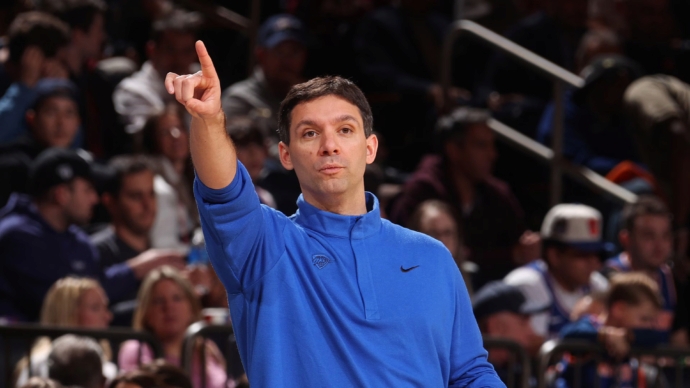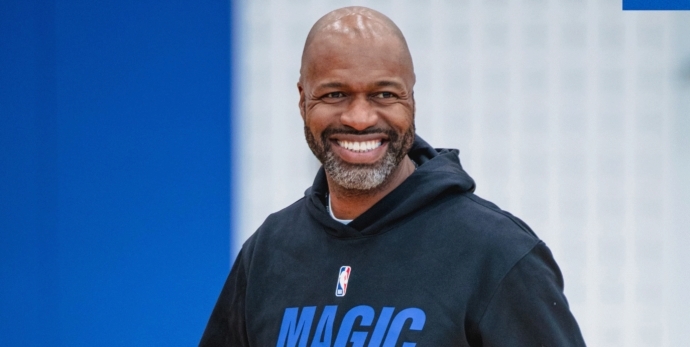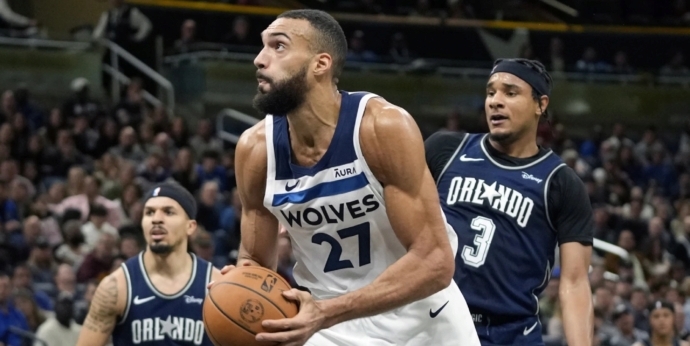LaMelo Ball is 22 years old, has
improved his scoring average in each of his three NBA seasons,
launches (and makes) 30-footers at a higher rate than most other
players, throws passes that nearly shatter the simulation we exist
in and already has an All-Star appearance under his
belt.
So why does most of the NBA
world agree that he’s still a borderline star, and not yet the
full-fledged franchise cornerstone he’s clearly capable of
being?
In one word (a curse to some) it
all comes down to Ball’s efficiency. He’s never produced highly
efficient buckets like the upper-echelon point guards – Damian
Lillard, Steph Curry and recently Shai Gilgeous-Alexander –
consistently do. Rather, Ball’s efficiency has been middling (a
54.7 career True Shooting percentage isn’t exactly alarming, but it
doesn’t satiate either.)
Ball has actually been a good
three-point shooter his whole career (37.7% on 7.5 attempts) and
nearly 50% of his shots over the past two seasons have been from
deep,
but the shooting inefficiencies
start to become apparent as he gets closer to the hoop, bucking
conventional wisdom that tells you the closer you get to a basket,
the easier scoring should become. But there are large men standing in there, so maybe that has
something to do with it. I don’t know; I just write
words.
Anyway… according to Cleaning
The Glass, Ball has shot 53%, 54%, and 54% at the rim (within four
feet) in his first three seasons, respectively. That’s hovering
around the 25th percentile of all point guards, not where you’d
expect – or hope – a player of his size and craftiness to
be.
Being a bad rim finisher, on its
own, is not a flaw that will nullify a player’s potential to be an
elite scorer – just look at Trae Young, who has been a mediocre rim
finisher most of his career, but compensates with an incredible
floater. The problem for Ball is that he’s more likely to attempt a
shot at the rim than he is to attempt anything from the midrange,
even though he’s shown some proficiency in the midrange
area:
Even more LaMelo Ball: makes Chris Duarte
disappear with this quick spin + the iso finish and touch to get it
over Turner at the rim, again pic.twitter.com/pOv2d6c80U— Brian Geisinger (@bgeis_bird)
December 30, 2021
In his first two seasons, Ball
was in the 61st and 56th percentile for all midrange shots among
point guards, according to Cleaning The Glass. (His midrange
numbers dropped pretty drastically across the board last year, but
that can mostly be blamed on three ankle sprains that limited him
to 36 games).
In the “short mid,” which is
from four-to-14 feet, Ball was right in the middle of the pack
(55th percentile as a rookie and 52nd percentile as a sophomore).
From the “long mid,” he’s been even better, shooting 45-of-111,
good for the 62nd percentile of all point guards his sophomore
season. None of those numbers are jaw-dropping, but they are far
better than his numbers at the rim.
But despite the solid numbers
from the midrange, Ball was only in the 20th, 36th and 20th
percentile, respectively, in midrange attempts among point guards his first three years.
Essentially, he’s good in the midrange, but doesn’t shoot from
there often.
He should shoot there
more often. At 6-foot-7, Ball possesses a mix of size, touch and
creativity that very few other players do, and the deep floaters,
runners and funky fadeaway midrange jumpers are all perfect
examples of that creativity.
Exhibit A:
LaMelo has absurd range on his floater
pic.twitter.com/q2yiibCl7h— Brett Usher (@UsherNBA)
August 11, 2023
Exhibit B:
LaMelo’s dexterity is elite. The ability to
transition from dribble to floater with one hand the entire way
while his other hand fends off Claxton requires tremendous skill.
pic.twitter.com/Hnm8XAAi6J– Jackson Frank (@jackfrank_jjf)
October 25, 2021
So, the key to Ball making
another leap as a scorer could rely on him keeping his rim attempts
about level with his rim attempts from last season (48th
percentile, about four attempts per game) while increasing the
midrange attempts to career-high levels. He doesn’t need to be
leading the league in midrange shots per game, but getting up to
around the 65th percentile of midrange attempts among point guards
could do wonders for his efficiency – assuming the actual shooting
percentages stay the same with higher volume.
Ball shouldn’t
completely
eliminate his rim attempts is
because 1) he should keep
working to improve skills that he struggles with, obviously, and 2)
Ball driving consistently does still yield positive results a lot of the
time. Last season, Ball was 10th in the NBA in assists
on drives, according to NBA.com.
(Luka Doncic, Ja Morant, Tyrese Haliburton, Darius Garland and
Young are some of the names
in front of him on the list).
Driving to the rim with the
threat of a pass is an area Ball excels in, and if there’s no
chance that he’ll take a
drive all the way to the rim and attempt a shot, then defenses have
one less outcome to worry
about when he has the ball. Ball’s ability to draw defenses and
then find teammates on dropoff passes is always a treat to
watch:
one of the man ways lamelo ball is unlike
any other passer is how he manipulates the ball, defenders just
have no idea where he is gonna pass when he dangles the ball in
front of them pic.twitter.com/P4EIlRZ2tK– Ben (@bjpf_)
February 25, 2023
LaMelo Ball driving creates good
things, and he should continue to put pressure on the
defense by getting into the lane. But by decreasing the
frequency of actual rim attempts, and increasing
the frequency of his midrange
prowess – even including shots that are bad looks for most,
like one-legged midrange
runners or floaters from the free-throw line – LaMelo can help
himself evolve from a volume
scorer into a rounded, efficient scoring weapon.



